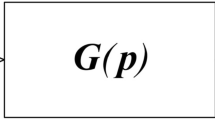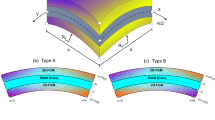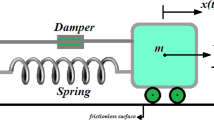Abstract
In this paper, a new class of Runge–Kutta methods is introduced. Some basic properties of this subgroup of algebraically stable methods are presented and a complete parametric representation is given. Necessary and sufficient order conditions for lower order methods as well as sufficient order conditions for higher order methods are derived yielding a significantly reduced number of conditions when compared with general Runge–Kutta methods. Design examples conclude this paper.
Similar content being viewed by others
REFERENCES
J. C. Butcher, The Numerical Analysis of Ordinary Differential Equations, John Wiley, New York, 1987.
J. C. Butcher and G. Wanner, Runge-Kutta methods: some historical notes, Appl. Numer. Math., 22 (1996), pp. 113-151.
D. Fränken and K. Ochs, Synthesis and design of passive Runge-Kutta methods, AEÑ Int. J. Electron. Commun., 55/6 (2001), pp. 417-425.
E. Hairer, Highest possible order of algebraically stable diagonally implicit Runge-Kutta methods, BIT, 20 (1980), pp. 254-256.
E. Hairer, S. P. Nørsett, and G. Wanner, Solving Ordinary Differential Equations I: Nonstiff Problems, Springer-Verlag, New York, 1996.
E. Hairer and G. Wanner, Solving Ordinary Differential Equations II: Stiff and Differential-Algebraic Problems, Springer-Verlag, New York, 1996.
D. Jungnickel, Graphs, networks and algorithms, Springer-Verlag, New York, 1999.
Ch. Lubich and A. Ostermann, Multi-grid dynamic iteration for parabolic equations, BIT, 27 (1987), pp. 216-234.
P. Penfield,Jr., R. Spence, and S. Duinker, Tellegen's Theorem and Electrical Networks, M.I.T. Press, London, 1970.
K. Ochs, Passive integration methods: Fundamental theory, AEÑ Int. J. Electron. Commun., 55/3 (2001), pp. 153-163.
J. M. Sanz-Serna and L. Abia, Order conditions for canonical Runge-Kutta schemes, SIAM J. Numer. Anal., 28 (1991), pp. 1081-1096.
M. Sofroniou and W. Oevel, Symplectic Runge-Kutta-schemes I: Order conditions, SIAM J. Numer. Anal., 34 (1997), pp. 2063-2086.
J. Stoer and R. Bulirsch, Introduction to Numerical Analysis, Springer-Verlag, New York, 1980.
Author information
Authors and Affiliations
Rights and permissions
About this article
Cite this article
Fränken, D., Ochs, K. Passive Runge–Kutta Methods—Properties, Parametric Representation, and Order Conditions. BIT Numerical Mathematics 43, 339–361 (2003). https://doi.org/10.1023/A:1026039820006
Issue Date:
DOI: https://doi.org/10.1023/A:1026039820006




